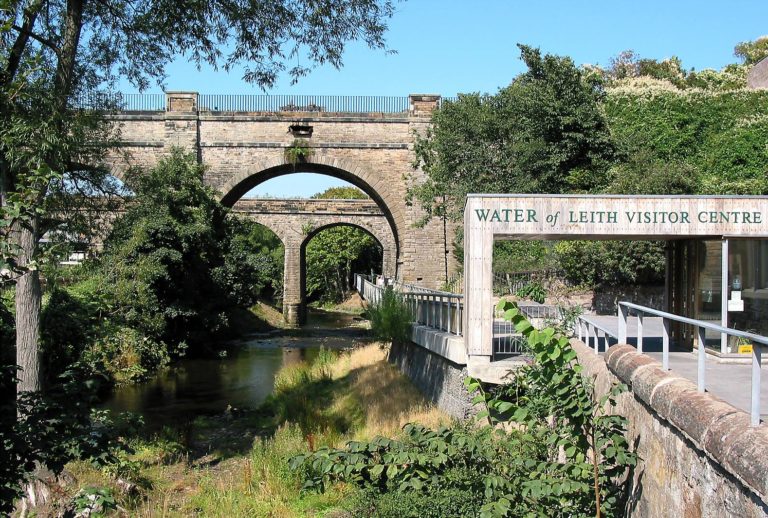You are standing beside the Old Dean Bridge, built in 1643 by the Baxters. Look for a carved stone in the wall showing the symbols of the Baxters’ trade – crossed peels, the wooden shovels used to move loaves into and out of the ovens. The Baxters also built the Tollbooth, the impressive ochre yellow building across the road, in 1675. This was a granary, their headquarters, and of course where they gathered a toll from citizens using the bridge they built. The inscription above the door reads ‘God bless the Baxters of Edinburgh who built this house’.
Across the river are the building of West Mills, converted in to housing in the 1970s and if you follow the path down Millers Row you will encounter a small park on the site of Lindsays Mill. In the park you will see 3 mills stones. These are not the traditional locally quarried millstone but are made from imported French quartz. When grain became cheaper to import from America, it was much harder and drier than local grain so they needed a tougher stone. The stone are in sections bound by a steel band as they were too heavy to import complete.
Also in the park you will hear the roar of World End Weir another large vertical weir on the river. This weir fed the Great Lade, an impressive lade (or Mill race) which ran for over 2 miles powering some further 8 mills from here to Cannonmills. Along much of its length the great lade was carried in a wooden trough above head height. This great feat of engineering was however a public health hazard as the river was also Edinburgh’s main sewer and home to a host of industry. It was closed in 1881 reputedly by a landslide, in a single blow wiping out all milling from Dean, through Stockbridge to Cannonmills.
As you continue downstream you can appreciate how deep in the valley you are as you pass under the rivers most impressive bridge. Dean Bridge was designed and engineered by Thomas Telford and was built in 1830. It was commissioned by John Learmonth the lord provist and Princes Street coach maker, who owned all the land to the north of the river. The venture cost £30,000 and in the 19th century an additional parapet was added to negate suicides. The next audio point is at St Bernard Well.
–
Video created by Bryce Morrison, Edinburgh U3A Movie Makers Group



